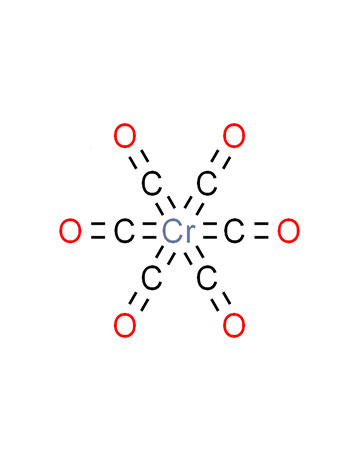Chromium hexacarbonyl
Chromium hexacarbonyl is a volatile; air stable precursor of Chromium(0); widely used for thin film deposition – ALD and CVD.
Description
Chromium hexacarbonyl is widely used as a catalyst for isomerization of alkenes. It is involved in the hydrogenation of 1,3-conjugated dienes and oxidation of allylic and benzylic positions. It acts as a precursor to prepare phenanthrenes, tricarbonyl(arene)chromium and Fischer carbine complexes.
Physical Description:
Chromium hexacarbonyl Applications:
Chromiumhexacarbonyl is a volatile; air stable precursor of Chromium(0); widely used for thin film deposition – ALD and CVD. The thin films can be grown at room temperature and low pressure by laser CVD .
1. Catalyst for the dehydrocoupling reactions of borane-secondary and -primary amine adducts.
2. Starting material for synthesis of benzylamine tricarbonylchromium complexes used in Pd-catalyzed
asymmetric cross-coupling of aryl triflates to the benzylic position of benzylamines.
3. Starting material for synthesis of (Fluoroarene)Cr(CO)3 complex used in Pd-Catalyzed direct arylation of
fluoroarenes.
4. Used in Pd-catalyzed asymmetric allylic alkylations with toluene derivatives.
5. Used Pd-catalyzed [3+3] annulation of vinyl chromium(0) carbene complexes through carbene migratory
insertion/Tsuji-Trost reaction.
6. Used as a CO source in catalytic carbonylative rearrangements.
7. Used in anti-Markovnikov hydrogenation of epoxides to Markovnikov alcohols.
Chromium hexacarbonyl Preparation
Chromium hexacarbonyl is prepared by the reaction of anhydrous chromium(III) chloride with carbon monoxide in the presence of a Grignard reagent. A 60% product yield may be obtained at the carbon monoxide pressures of 35 to 70 atm. Other chromium salts may be used with carbon monoxide and Grignard reagent in the preparation. The compound may also be obtained by the reaction of a chromium salt with carbon monoxide in the presence of magnesium in ether or sodium in diglyme.
Purification Methods
Wash the complex with cold EtOH, then Et2O, and allow it to dry in air. Alternatively recrystallise it from dry Et2O. This is best accomplished by placing the hexacarbonyl in a Soxhlet extractor and extracting exhaustively with dry Et2O. Pure Cr(CO)6 is filtered off and dried in air. Completely colourless refracting crystals are obtained by sublimation at 40-50o/<0.5mm in an apparatus where the collecting finger is cooled by Dry Ice and in which there is a wide short bore between the hot and cold sections to prevent clogging by the crystals. Loss of product in the crystallisation and sublimation is slight. It is important not to overdo the drying as the solid is appreciably volatile and TOXIC [vapour pressure is 0.04(8o), 1.0(48o) and 66.5(100o) mm]. Also do not allow the Et2O solutions to stand too long as a brown deposit is formed which is sensitive to light, and to avoid the possibility of violent decomposition. It sinters at 90o, decomposes at 130o, and EXPLODES at 210o.
[Owen et al. Inorg Synth III 156 1950, Podall et al. J Am Chem Soc 83 2057 1961.] POISONOUS.



Reviews
There are no reviews yet.